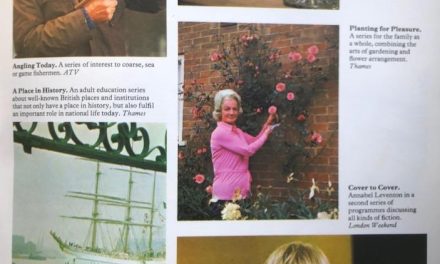The current crisp, cold Winter mornings are making a trip I made to Pensthorpe Wildlife and Gardens in early September seem a distant, balmy memory. Having persuaded a friend (who affords me the affectionate moniker of ‘wildlife geek’) to join me, we packed up a picnic and set off to the north Norfolk nature reserve. I’d been keen to visit Pensthorpe since moving to Norwich 18 months previously, and the key impetus for me doing so was the fact that the BBC Two wildlife series Springwatch – of which, along with its paired show Autumnwatch, I am a devoted annual viewer – was broadcast live from there for three years from 2008.
Springwatch’s association with the reserve recurs in much of Penthorpe’s current marketing: the website has a dedicated webpage which includes a quote from series producer Roger Webb, the souvenir guide has a two-page spread with production shots featuring the presenters Kate Humble, Chris Packham and Simon King, and the guide on the Wensum Discovery Tour – as well as commentating on wildlife and natural features – pointed out the building where Springwatch was filmed and the Kestrel box that was installed by the programme-makers during their stay. There’s an expectation, it seems, that the kind of visitors who would come to Pensthorpe are also the kind of people who watch Springwatch and its spin-offs, and that they – like me – have been inspired to visit the reserve by the programme having been broadcast from the site. I’d be curious to know if the reserve has conducted a visitor survey to discover if this presumed correlation is correct.

Pensthorpe is not the only nature reserve in East Anglia I’ve visited since relocating to Norwich. I’ve made regular excursions to Blakeney, Cley Marshes, Strumpshaw Fen and Minsmere, a reserve on the Suffolk coast. These locations and habitats are appealing and familiar to me because I spent my childhood living on a nature reserve. My family home, in which my parents still live, is in the midst of the Alverstone Mead Nature Reserve on the Isle of Wight, and my father was the reserve’s warden for nearly twenty years. Wildlife and ornithology, nature conservation and habitat protection, have been – and remain – customary themes of family activities, conversations and also television viewing. Countryfile (1988- ), David Attenborough’s The Trials of Life (1990) and The Private Life of Plants (1995), and The Natural World (1967- ) were regular household viewing when I was growing up.
By the time Springwatch began broadcasting in 2005 (with Autumnwatch following later that year as firstly a one-off special and then a full series in 2006) I had long since moved out of home. The two series consequently have always functioned importantly to me as both a conduit for reminiscence and as a common cultural currency between my parents and I. Watching Autumnwatch 2013 I was struck by the nostalgic longing I felt for Autumn walks with family and friends on Alverstone Mead, made less practical now by living in an urban location and with limited daylight leisure time outside work hours. So instead I settle down with a cup of tea and am transported to beautiful natural settings – this year Leighton Moss RSPB Reserve in Lancashire – from the comfort of my city terraced house. And at the end of the broadcast – or sometimes even during – there will be a Norwich to Alverstone phone call to discuss the tenor of the programme’s badger cull report or to marvel at the starling murmuration footage.

So Autumnwatch and Springwatch evoke for me childhood memories of witnessing seasonal wildlife spectacles, are a particularized connection with family and home, and an opportunity to uphold and preserve my interest in the natural world during the months of shorter daylight hours when I’m less able to observe it for myself. Yet I have always sensed that the expected audience for these series is not actually a committed ‘wildlife geek’ such as myself. Janet McCabe’s excellent CST piece on Springwatch from 2011 demonstrates well that someone who is ‘not the regular outdoors type’ can be ‘riveted’ by the programme’s wildlife dramas and topical conservation reports. The BBC’s own press release for Autumnwatch 2013 stated that:
Working closely with wildlife organisations across the country, Autumnwatch will be encouraging viewers to get out; experience and learn about the season for themselves.
This professed advocacy suggesting that naturalists – albeit amateur ones like me – who are habitually ‘out’ in the British countryside or visiting the country’s wildlife-rich nature reserves, are not the programme’s intended audience. These viewers, perhaps it is felt, are being well served elsewhere in the BBC schedule. Indeed, purely anecdotally, one of my father’s conservationist colleagues remarked to me once that they’re not a keen viewer of Springwatch, finding the programme’s approach a little too populist and superficial in scope compared to other natural history shows.
So thinking about how and why I personally view Springwatch and Autumnwatch during this Autumn’s series, and why others may have reason to watch it differently, as well as the way in which nature reserves such as Pensthorpe (and other programme venues such as Leighton Moss and Ynys-Hir RSPB reserve in Wales) assume viewer-visitor correlations in their promotional materials, has raised for me some interesting questions. Ones which, as a scholar of audience and reception studies, I know can really only be answered by asking the programme’s audiences themselves. And, when my current research schedule allows it, I shall probably feel a need to set about asking them!
Sarah Ralph is a Research Associate in the School of Film, Television and Media Studies at the University of East Anglia, on the AHRC-funded research project, ‘Make Me Laugh: Creativity in the British Television Comedy industry’. She is an editorial board member of Participations, one of the ‘Remembering Alien’ research project team, and co-editor of a forthcoming special edition of Celebrity Studies on audiences and celebrity.





